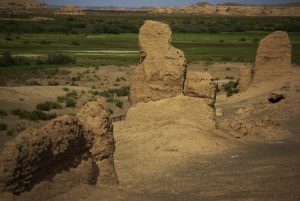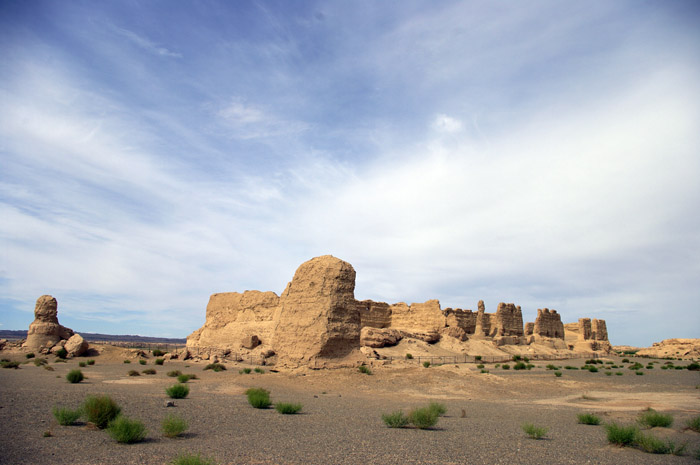Hidden deep within the Gobi Desert, approximately 20 kilometres (12 mi) from Yumen Pass and 60 kilometres (37 mi) from Dunhuang, the 2,000-year-old remains of Hecang Fortress were designed never to be found. Its north and south are shielded by tall sand dunes, while the nearby Shule River once supplied it with water in this otherwise barren territory. Only when you are close enough does the fortress suddenly appear from behind the mounds of sand. In ancient times, this secrecy was necessary, as Hecang Fortress served as a military warehouse from the Han Dynasty (206 BC–220 AD) onwards. It was a vital lifeline for soldiers working tirelessly along the Great Wall to keep China safe from invasion, and thus it was a major target for the country’s military opponents.
 From 104 BC right through until 420 AD, the former military warehouse was used to store grains, clothes, hay, military equipment, and a myriad of other supplies that were transported from nearby oasis towns. The fortress originally consisted of three depots that were divided by two earthen walls, which towered in at 43 metres (141 ft.) in height and stretched for over 130 metres (427 ft.) in length. At equal intervals, a myriad of triangular holes punctuate the walls and were originally designed to aerate the building in the arid desert heat. Nowadays the fortress is a popular tourist attraction in the area, although be forewarned: you should pack your own lunch, because you won’t find any delicious treats stored inside of its walls!
From 104 BC right through until 420 AD, the former military warehouse was used to store grains, clothes, hay, military equipment, and a myriad of other supplies that were transported from nearby oasis towns. The fortress originally consisted of three depots that were divided by two earthen walls, which towered in at 43 metres (141 ft.) in height and stretched for over 130 metres (427 ft.) in length. At equal intervals, a myriad of triangular holes punctuate the walls and were originally designed to aerate the building in the arid desert heat. Nowadays the fortress is a popular tourist attraction in the area, although be forewarned: you should pack your own lunch, because you won’t find any delicious treats stored inside of its walls!
Join a travel with us to explore more about Hecang Ruins: Explore the Silk Road in China
